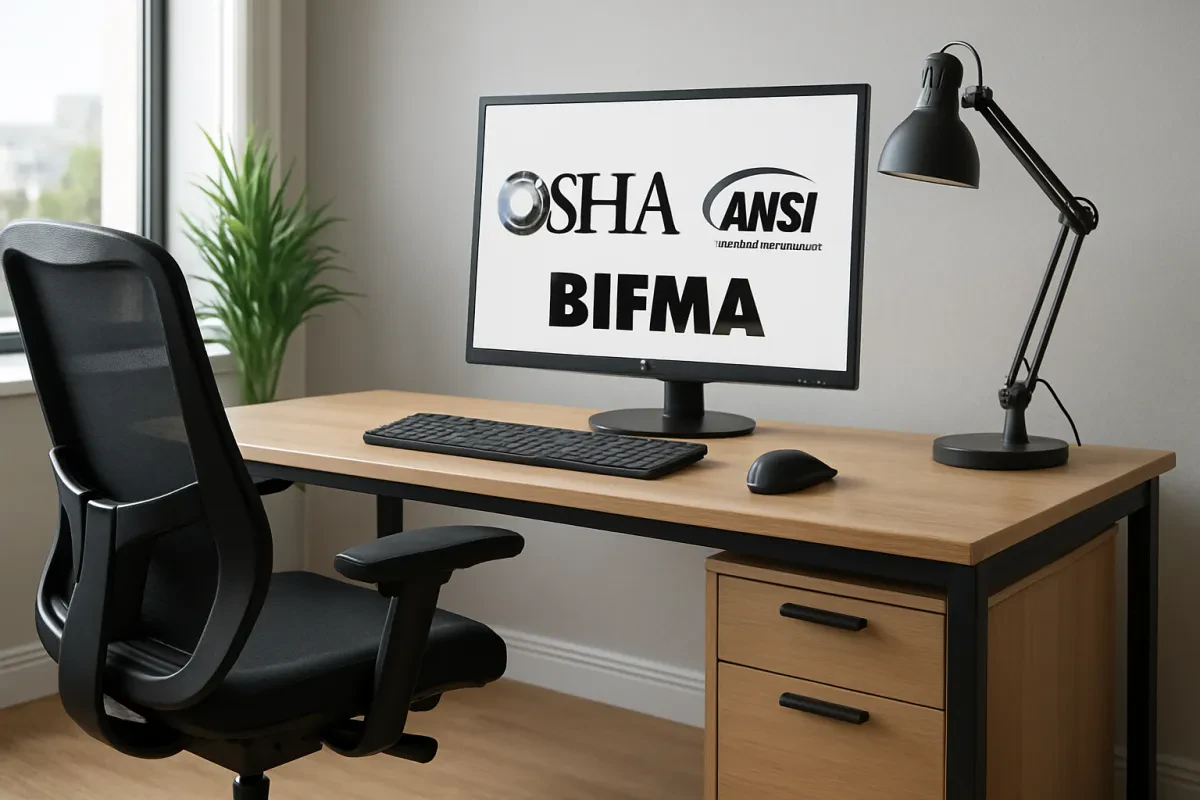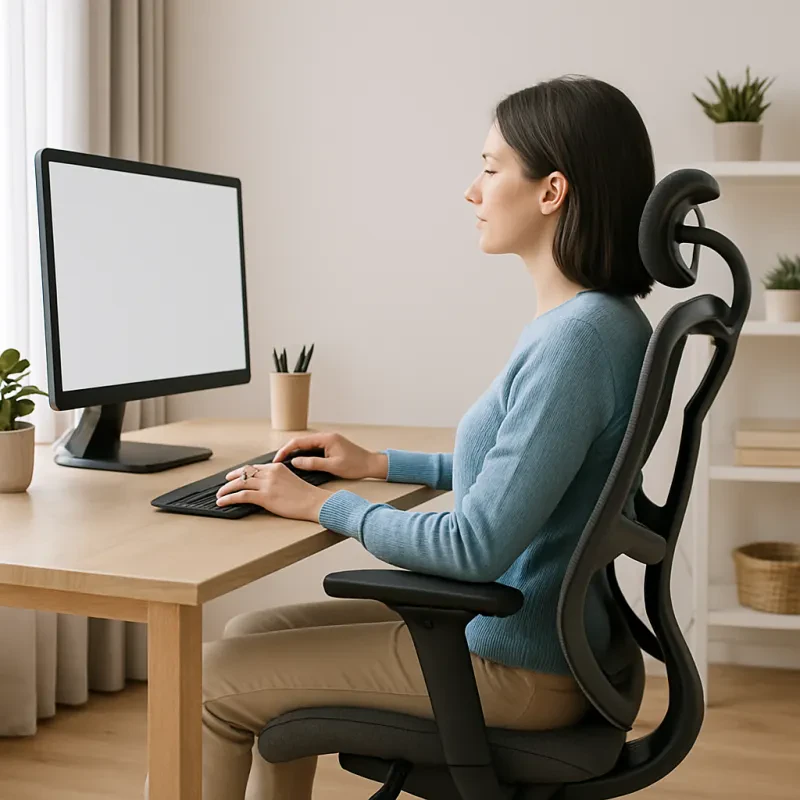If you've ever spent a long day at your desk and felt that nagging tension in your shoulders or a subtle ache building in your lower back, you're not alone. In our increasingly digital world, where many of us are glued to screens for hours on end, creating a workspace that supports our bodies is more important than ever. That's where ergonomic standards come into play. These guidelines aren't just bureaucratic red tape—they're practical frameworks designed to help us work smarter, stay healthier, and keep those everyday strains at bay.
In this article, we'll dive into three key players in the world of ergonomic standards: OSHA, ANSI, and BIFMA. We'll explore what each organization does, the kinds of requirements and recommendations they offer, and why they matter for anyone setting up a home office or workstation. Think of this as your friendly guide to navigating these standards, so you can make informed choices that promote long-term well-being and efficiency. By understanding these, you'll be better equipped to create an environment that minimizes fatigue and helps you feel more at ease throughout the day.
What Is Ergonomics, Anyway?
Before we jump into the specifics, let's quickly touch on ergonomics itself. At its core, ergonomics is the science of designing tools, furniture, and workspaces to fit the human body and its movements. The goal? To reduce unnecessary stress on our muscles, joints, and overall system, making it easier to maintain focus and energy without those nagging interruptions from discomfort.
Ergonomic standards provide benchmarks for everything from chair heights to keyboard placements, ensuring that products and practices align with how our bodies naturally function. Organizations like OSHA, ANSI, and BIFMA play crucial roles in developing and promoting these standards, often drawing from research in health, safety, and human factors. They're not about forcing one-size-fits-all solutions but offering flexible guidelines that can adapt to different needs, ultimately helping to prevent those build-ups of tension that can sap your productivity over time.
OSHA: The Guardian of Workplace Safety
Let's start with the Occupational Safety and Health Administration, or OSHA. If you're in the U.S., you've probably heard of OSHA—it's a federal agency under the Department of Labor, established back in 1970 to ensure safe and healthy working conditions for employees. While OSHA covers a broad range of hazards, from chemical exposures to fall prevention, its approach to ergonomics focuses on protecting workers from repetitive strain and awkward postures that can lead to long-term issues.
OSHA doesn't have a single, mandatory ergonomic standard like it does for things like hard hats or electrical safety. Instead, it relies on the General Duty Clause of the Occupational Safety and Health Act, which requires employers to provide a workplace free from recognized hazards that could cause serious harm. In the context of ergonomics, this means addressing risks that might result in musculoskeletal disorders (MSDs)—think conditions arising from prolonged sitting in poorly designed chairs or repetitive motions without proper support.
To guide employers and workers, OSHA offers voluntary guidelines tailored to specific industries. For example, their ergonomic resources for office environments emphasize adjustable furniture, proper lighting, and regular breaks to ease the strain on your eyes, neck, and wrists. They recommend setting up your monitor at eye level to avoid craning your neck, positioning your keyboard so your elbows are at a comfortable angle, and using footrests if your feet don't rest flat on the floor. These aren't enforceable rules, but ignoring them could lead to citations if an injury occurs and OSHA investigates.
One standout resource is OSHA's eTool for Computer Workstations, an interactive online guide that walks you through self-assessments. It covers everything from chair adjustments to mouse placement, helping you tweak your setup to reduce the chances of developing those persistent aches that creep in after hours of typing or scrolling. For industries like manufacturing or healthcare, OSHA provides more targeted advice, such as lifting techniques to prevent back strain or anti-fatigue mats for standing workers.
What makes OSHA's approach so user-friendly is its emphasis on practicality. They encourage risk assessments where you identify potential problem areas—like a desk that's too high causing shoulder tension—and implement simple fixes. Training programs are also key, teaching employees how to recognize early signs of strain and adjust their habits accordingly. By following these guidelines, workplaces can foster an environment where employees feel supported, leading to fewer absences and higher morale. It's all about proactive steps to keep those daily irritations from escalating into bigger problems.
ANSI: Setting Voluntary Benchmarks for Excellence
Shifting gears, let's talk about the American National Standards Institute, or ANSI. Unlike OSHA, which is a government body, ANSI is a private, non-profit organization that oversees the development of voluntary consensus standards across countless industries. Founded in 1918, ANSI doesn't create standards itself but coordinates efforts among experts, businesses, and other stakeholders to ensure they're fair, balanced, and based on solid evidence.
In the realm of ergonomics, ANSI plays a pivotal role by accrediting standards that promote human-centered design. One of the most relevant is ANSI/HFES 100, developed by the Human Factors and Ergonomics Society (HFES), which focuses on human-computer interaction. This standard provides detailed specifications for workstations, including display heights, keyboard slopes, and seating dimensions, all aimed at optimizing comfort and efficiency.
For instance, ANSI/HFES 100 recommends that chairs allow for dynamic sitting—meaning you can shift positions easily to avoid stiffness—and that desks accommodate a range of body sizes. It also covers lighting to prevent glare that might strain your eyes, and acoustic considerations to minimize distractions. These standards are voluntary, but they're widely adopted by manufacturers and designers because they represent best practices backed by research.
ANSI also influences other ergonomic areas, like ANSI/ASSE Z359 for fall protection in elevated workstations or standards for hand tools that reduce grip fatigue. Their process involves rigorous peer review, ensuring that standards evolve with new technologies, such as standing desks or ergonomic mice. By adhering to ANSI guidelines, companies can demonstrate a commitment to quality, which in turn helps users maintain better posture and energy levels throughout the workday.
What's great about ANSI is its collaborative nature. Standards are updated periodically—ANSI/HFES 100 was last revised in 2007, with ongoing discussions for modern updates to include remote work trends. This keeps the focus on preventing those subtle build-ups of tension that can derail your focus, encouraging designs that adapt to you rather than forcing you to adapt to them.
BIFMA: Focusing on Furniture Durability and Comfort
Now, onto the Business and Institutional Furniture Manufacturers Association, or BIFMA. This trade association, founded in 1973, represents manufacturers of office and institutional furniture. BIFMA's standards are all about ensuring that desks, chairs, and other furnishings are safe, durable, and ergonomically sound, particularly for commercial environments but increasingly relevant for home offices too.
BIFMA's flagship standard is ANSI/BIFMA X5.1 for office chairs, which tests for stability, strength, and adjustability. Chairs must withstand rigorous simulations of daily use, like repeated swivels or weight loads, to guarantee they won't fail unexpectedly. Ergonomically, it specifies features like lumbar support to help maintain the natural curve of your spine, adjustable armrests to reduce shoulder strain, and seat depths that fit various body types.
Similarly, ANSI/BIFMA X5.5 covers desks and tables, ensuring they're stable and adjustable for standing or sitting positions. These standards incorporate ergonomic principles by requiring height adjustability, which allows you to alternate postures and alleviate the fatigue from staying in one position too long. BIFMA also has sustainability standards like LEVEL certification, which includes ergonomic criteria alongside environmental factors.
One cool aspect of BIFMA is its emphasis on third-party testing. Products that meet these standards often carry certifications, giving you confidence that your chair won't wobble after a few months or that your desk can handle the demands of a busy workday. For ergonomic benefits, these standards promote furniture that supports fluid movement, helping to ward off the stiffness that comes from static sitting.
BIFMA works closely with ANSI to harmonize standards, ensuring consistency across the board. Their guidelines are updated regularly—the latest X5.1 revision in 2020 incorporated more data on user diversity, like accommodating taller or shorter individuals to prevent awkward reaches that could lead to tension.
How These Standards Interconnect and Apply in Real Life
You might be wondering how OSHA, ANSI, and BIFMA fit together. In essence, they complement each other: OSHA provides the regulatory backbone, urging employers to address ergonomic risks; ANSI offers broad, evidence-based benchmarks; and BIFMA drills down into furniture specifics. Together, they create a holistic framework for building workspaces that prioritize health.
In practice, a company might use OSHA's guidelines to assess workplace hazards, then select ANSI-compliant workstations and BIFMA-certified furniture to mitigate them. For individuals setting up a home office, these standards serve as a checklist: Is your chair adjustable per BIFMA specs? Does your setup align with ANSI's recommendations for screen placement? Following them can help you create a space that eases the daily grind, reducing the likelihood of those nagging tensions that build up over time.
Research shows that ergonomic interventions lead to tangible benefits, like improved productivity and fewer health complaints. By minimizing repetitive strains through proper adjustments, you can stay sharper and more engaged. It's not about perfection but making small tweaks that add up to big relief.
Wrapping It Up: Empowering Your Workspace
As we've explored, understanding ergonomic standards from OSHA, ANSI, and BIFMA gives you the tools to craft a workspace that's not just functional but truly supportive. These organizations provide invaluable guidance to help prevent those everyday strains, fostering environments where you can thrive without unnecessary interruptions to your flow.
If you're inspired to enhance your own setup, consider browsing through product categories tailored to these principles. You'll find options like adjustable desks, supportive chairs, and accessories that can transform your workstation or home office into a more comfortable, productive haven. After all, a little investment in ergonomics goes a long way toward feeling your best every day.
References
-
Occupational Safety and Health Administration. (n.d.). Ergonomics: Solutions to Control Hazards. U.S. Department of Labor. https://www.osha.gov/ergonomics
-
Occupational Safety and Health Administration. (n.d.). Computer Workstations eTool. U.S. Department of Labor. https://www.osha.gov/etools/computer-workstations
-
American National Standards Institute. (2007). ANSI/HFES 100-2007: Human Factors Engineering of Computer Workstations. Human Factors and Ergonomics Society.
-
Business and Institutional Furniture Manufacturers Association. (2020). ANSI/BIFMA X5.1-2020: Office Chairs. BIFMA.
-
Business and Institutional Furniture Manufacturers Association. (2017). ANSI/BIFMA X5.5-2017: Desk Products. BIFMA.
-
Bureau of Labor Statistics. (2023). Occupational Injuries and Illnesses Resulting in Musculoskeletal Disorders. U.S. Department of Labor. https://www.bls.gov/iif/



